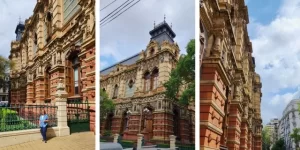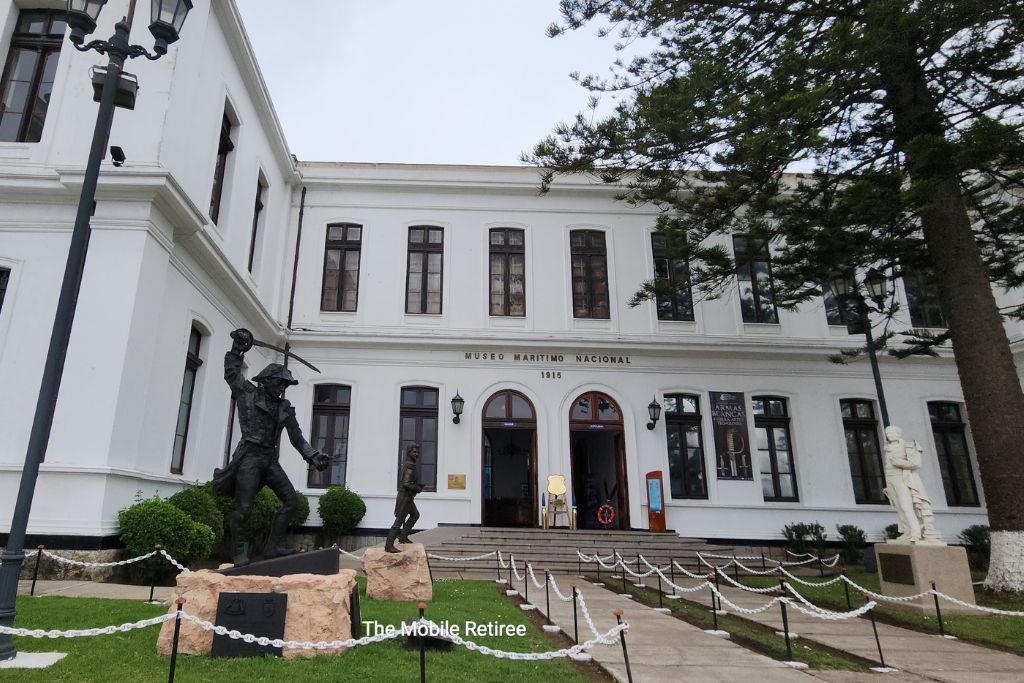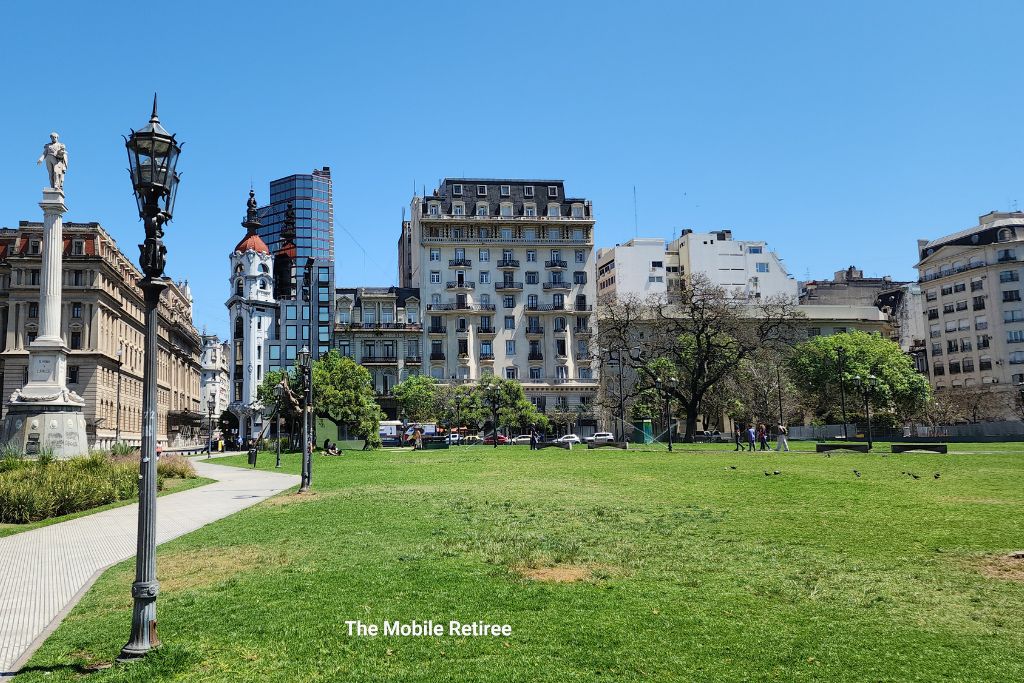Buenos Aires to Santiago by Bus: Why You Should Take the Bus (but only Once!)
Yeah, let’s talk about ways to save money while traveling, and live to regret it, LOL….
About Us and Why We Chose the Bus
In case you’re new to our story, here’s quick catch up; At the end of 2022 we decided that we were just… Done. The American Dream rang hollow and we were ready to both retire and escape the United States. After spending almost a year downsizing until everything we owned fit loosely into the bed of a pickup, we shoved all that stuff in storage and began our nomadic journey in November 2023.
The first ‘leg’ of our journey took us from Oregon to Panama, to Costa Rica, to Portugal, through Spain and France to England, to Canada and then back to Oregon. Our second leg kicked off with 2 months in Buenos Aires, Argentina — mid-October to mid-December 2024 — with our next destination being Valparaiso, Chile.
We are traveling on a budget but we are able to make choices based on comfort and convenience rather than being stuck to “What’s the cheapest way to get from hither to yon?.
We looked into all possible methods of transport to get us from Buenos Aires to Santiago Chile and decided on the overnight bus for three main reasons:
Our experience traveling from Buenos Aires to Santiago by Bus
So, how do we feel about in the rearview? LOL, we are glad we did it but we probably wouldn’t do it a second time.
Booking and Costs
We bought our tickets through the Busbuds app because the CATA Internacional website just wasn’t working. We purchased our tickets on the app and received an email confirmation that included the pdf of our tickets. The cost was US$175 for both of us. Considering that the cheapest flight we found was US$250 each plus baggage fees since our carry-on bags aren’t carry-on bags on the little planes, that seemed like a pretty good deal.
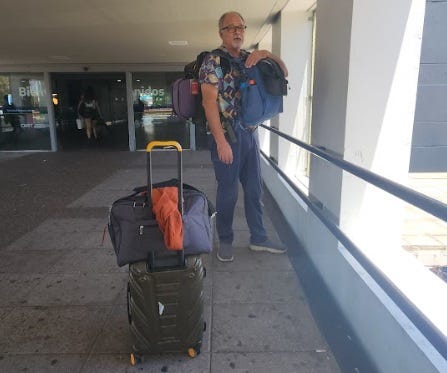
The bus offered 2 types of seats, there was 65 or 95% recline option. In order for me to sleep, I really need to lean back about 20 to 30%. Enough so that the weight of my head keeps my head against the seatback, ya know?
We went with the 65% option and in the end I don’t think it really makes a difference – it’s still 22 hours on a bus with only a couple of breaks to get out and stretch one’s legs.
Important Pre-Trip Documentation
At the Bus Station
The bus station at Buenos Aires, Terminal Retiro, is the size of a regional airport terminal. Ticket counters are all upstairs and the are over 200 of them. Not hyperbole nor exaggeration; the numbers literally start at 1 and go to (at least) 210.
Here’s what you need to know:
Our email from Busbud with out ticket info stated that “You must present your printed ticket or your ticket on a mobile device and photo identification matching all information provided during booking to board.”
Even though our tickets had confirmed seat numbers and a QR code, the fine print on the tickets (all in spanish!) also said we needed to check in at the ticket office one hour prior to departure.
Fortunately for us, we had read the fine print on the pdf ticket, one other passenger wasn’t so fortunate and had to scramble back through the crowd, up the stairs and the que at the ticket counter to check-in.
Why do you have to check-in if you already have tickets?
As it turns out, check-in at the ticket counter is so CATA Internacional can check your documents to verify your identity and make sure you have the appropriate documents to cross the border into Chile. (It would be a little awkward to get all they way up to the border and not be able to cross with the rest of the passengers.) After CATA Internacional has verified your travel documents are correct, the agent will hand you a little bit of stamped paper (boarding pass?) that you’ll need to show to the agents at the bus in order to get on the bus; just your ticket won’t do.
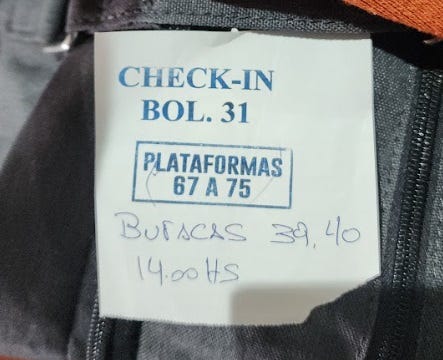
Luggage Handling
You hand your larger bags off to the agent at the side of the bus and they’ll hand you a sticky tag for each one. At the other end of the journey you WILL need that sticky tag – the agent handling luggage matches up the numbers on the bag tags to release them. I mean, from a distance it looks like chaos. He’s pulling out bags and holding them up and people are waving and walking up to grab them.
But when a person tried to grab a bag but didn’t have the right sticky tag, he sent them away and set the bag off to one side. We didn’t stick around to see how the end of that process played out but I am confident that they had to come up with some pretty convincing proof that the bag was theirs before the agent let it go.
Overhead storage is limited and shallow. My 19L daypack wouldn’t have fit even if there was empty shelf space. We ended up tuck our daypack between our feet so that we could access them during the trip.
Border Crossing Requirements
In order to enter Chile you also need to fill out the electronic pre-declaration affidavit. There is a qr code at the ticket counter, that is suppose to lead you to the website but when we tried it it took us to a broken website. A little search on the interwebs produced a site that worked.
Important notes when filling out this form:
- It is only valid for your actual entry date (not your departure date). In our case, we departed Buenos Aires on Dec 19th but our entry in Chile was actually the 20th.
- You have to select which border control entry point you will be arriving at. For the Buenos Aires — Santiago bus it will almost certainly be Paso Internacional Los Libertadores but it is worth asking the driver before you fill it out.
The Journey Timeline
We headed out of Buenos Aires at about 14:00 and made our first stop in Liniers before even leaving the city where we picked up a few more passengers. Also, a guy came on selling sandwiches, so, if you forgot to eat before getting on the bus, you’re covered.
Once we headed out of Linier, we just rode the bus. For hours. We pulled into a service area around 21:00 for a 40 minute break. Plenty of time to have a smoke, eat a sandwich, use a proper bathroom and have another smoke.
We then rode the bus some more. For hours.
At 06:00 we stopped for at a convenience store where we were able to get a snack. The announcement was somewhat garbled but we think the driver mentioned something about the regular stop was closed and something about running behind schedule so they were going to stop here instead. Don’t remember the name of the store.
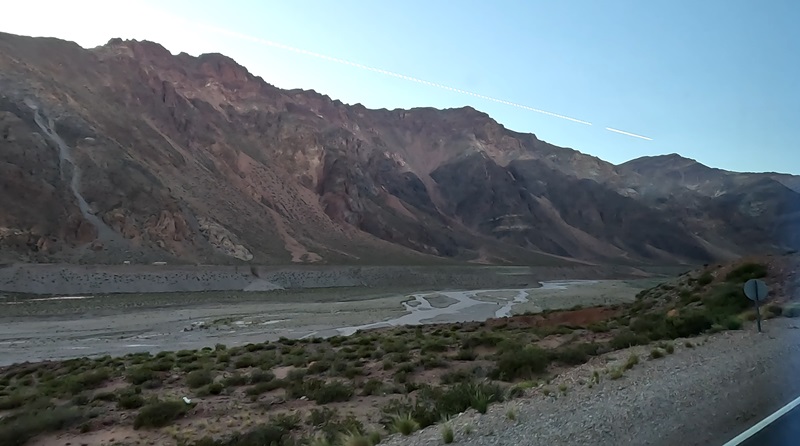
This part of the trip was the main reason we chose to travel from Buenos Aires to Sanitago by bus! The giant snow-capped Andes Mountains ensure you’re never short of something to look at out the window. The road is winding in parts, especially just after the border crossing, so bring motion sickness pills if you think you might need them.
At 08:15, our bus stopped in the line of traffic waiting to enter the customs facility. The bus was in line for about 20 minutes before we entered the ‘bus barn’. Our bus was the only bus in the barn at the time so we then got off the bus, collected our luggage and headed inside the terminal to go through the customs and immigration process. There isn’t much in the way of signage, we just followed the crowd. Not that there are a lot of different places you might wander off to, but some of us like to see a clear indication; like a sign with a big-ass arrow saying “Immigracion” or “Control de Entrada” or something. There were two lines open and no difference between them. That process took another 20ish minutes.
One more thing…. it much cooler at 10,000 feet than it is down at sea level in Buenos aires so be sure to bring a sweater or jacket. The bus barn is open-air and the air is brisk!
After completing the custom and immigration process, we then stepped outside to admire the views of the Andes from our 3,200 meter (10,499 feet) vantage point. Quite a few folks walked down to one end of the parking lot to take their selfies so I have to assume there’s a better view. But, it was a couple hundred yards away and we were happy with what we had for backdrop…

By 09:30 we were all back on the buss and headed down on the Chilean side of the mountains and that’s where it got scenic. The road down from the pass is a series of 29 (or 27?) curves and switchbacks with steep drops on the side of the road and no guardrails.
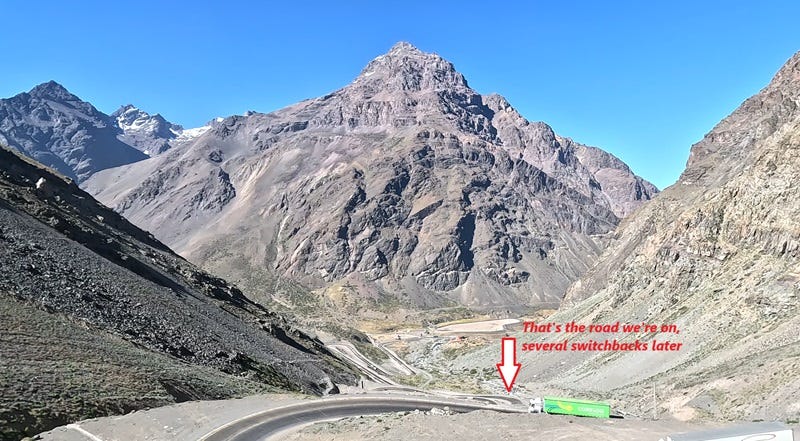
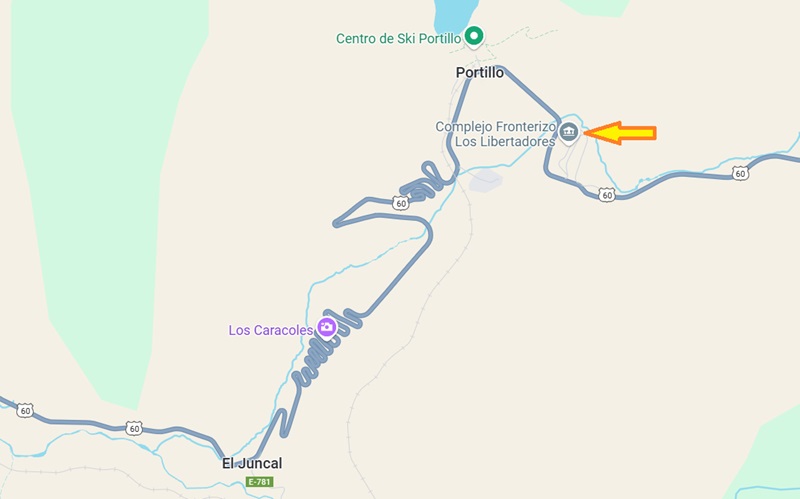
By 10:15 we were through all of the curves and on a much more gradual descent.
The last couple hours of the ride were pretty uneventful, we arrived to Santiago bus station a little after noon, collected our bags and shortly after 13:00 we were on our way to Viña del Mar.
Why we won’t be doing this trip again
Legroom was minimal – when the passenger in the seat in front of us reclined their seat;
Seats were uncomfortable and broken
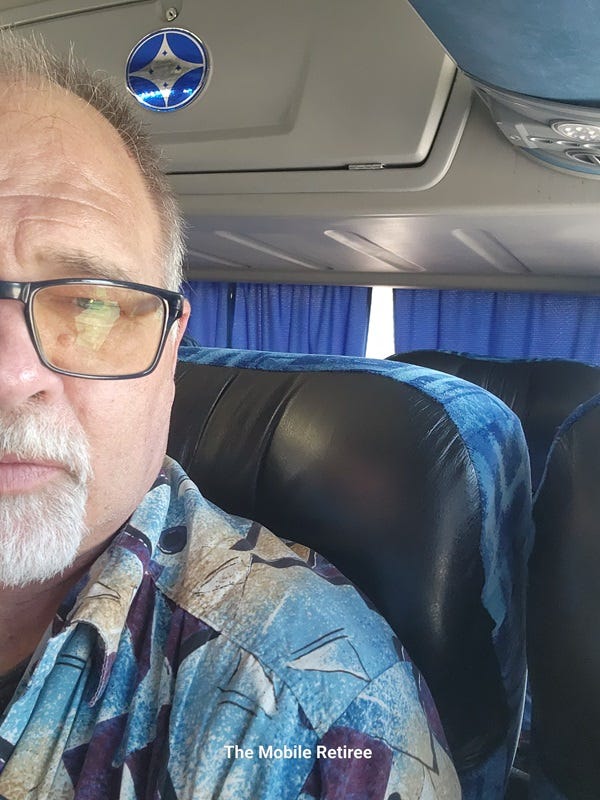
So, takeaways from the trip?
In some circumstances, taking the bus from Buenos Aires to Santiago or the reverse, is a perfectly reasonable option. We are unlikely to book another overnight bus trip; we’ve kind of agreed that 6 hours is our threshold for taking the bus and 22 hours is just too long to sit in an uncomfortable position.
Having said that, for someone making their first trip to South America and moving between Argentina and Chile, we recommend taking the bus – it build character, lol, plus it is really hard to appreciate the Andes mountains just flying over or seeing them from a distance.
Prefer to watch the video?
Our videos from our visit to Argentina
Our videos from our visit to Chile
Traveling Soon?
Checkout these helpful resources!
👉Don’t forget to grab your Free Itinerary Checklist

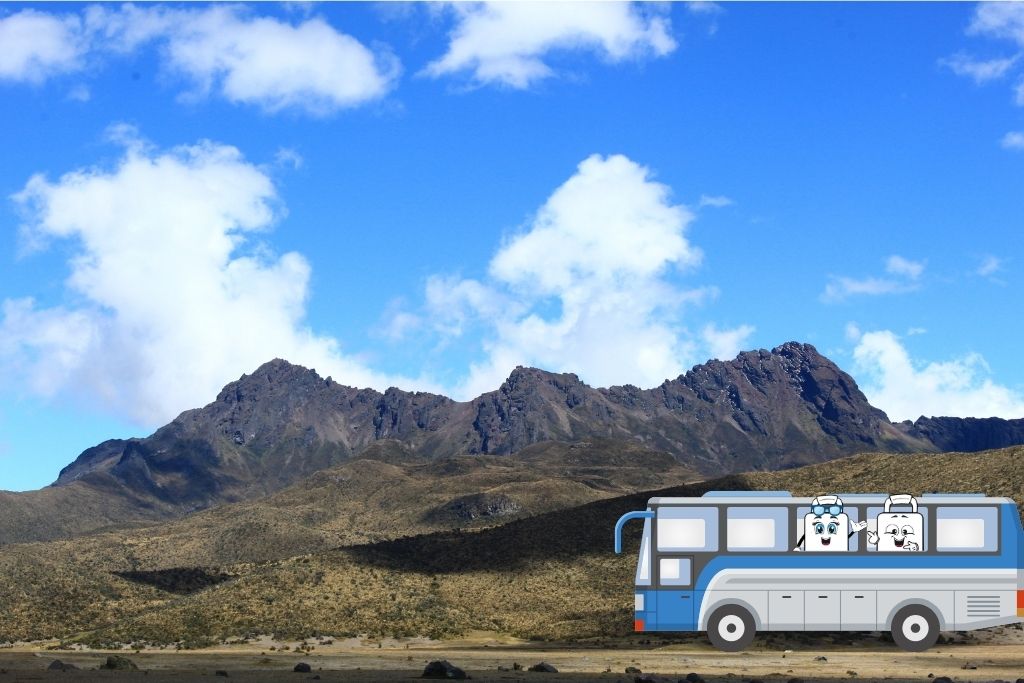
 Subscribe to our channel
Subscribe to our channel